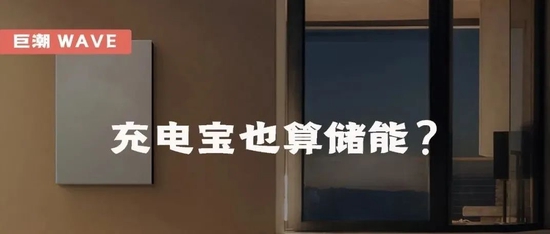
Welcome to the WeChat subscription number of “Sina Technology”: techsina
Text/Jingyu
Source / Jucha WAVE (ID: WAVE-BIZ)
The energy storage industry is in a period of high prosperity.
In the primary market, energy storage projects have been snapped up, and many angel round projects are valued at hundreds of millions of yuan. Not a few, the price-earnings ratio of more than 100 times has become the norm.
Whenever a popular track breaks out, it is inevitable that other players will jump out of the track in various ways to gain capital dividends, and the energy storage track is no exception. Huabao Xinneng, which will be listed on the GEM in the near future, has played a vague “edge ball”.
Huabao New Energy’s main business is portable energy storage, also known as “large power bank”. According to the prospectus, in 2020, it ranks first in the world in terms of shipments and sales of portable energy storage products, with a market share of 21%.
However, in the listing announcement, Huabao New Energy, together with securities companies, issued shares with reference to the valuation level of overseas household energy storage leader Paineng Technology, and set the issue price at 237.5 yuan per share, corresponding to the deduction of non-fee in 2021. The issue price-earnings ratio of net profit reached 84.6 times.
Due to the high issue price, Huabao Xinneng originally planned to raise 676 million yuan, but the final net fundraising amount was as high as 5.595 billion yuan, 7.28 times more than the proposed fundraising amount. At the same time, the high issue price and excessive fundraising of Huabao New Energy have also been questioned by the outside world: Can charging treasures also be regarded as energy storage?
Some potential investors have also started voting with their feet. The issuance results on the evening of September 12 showed that Huabao Xinneng’s online abandonment rate reached 18.58%, and the total number of abandoned shares accounted for 9.01% of the total issued shares. This also casts a shadow over the most expensive new stock of Huabao Xinneng this year.
To C Vs TO B
Household energy storage refers to large household energy storage equipment with a charge of more than 3 kWh.
Portable energy storage equipment, also known as “large power bank” and “outdoor power supply”. Strictly speaking, it is a small energy storage product like mobile phone batteries and ordinary power banks. However, it is not the same “species” as household energy storage, and the product categories, application scenarios and business models of the two are significantly different.
The capacity of portable energy storage is generally in the range of 1000-3000Wh, that is, it stores 1-3 kWh of electricity, and can only be used for an induction cooker with a power of about 2000W for 1.5 hours. It is mainly used in outdoor activities such as camping, photography, fishing, earthquakes and fires. and other emergency scenarios.
Household energy storage refers to large-scale household energy storage equipment with more than 3 kWh of electricity, which is mainly used in off-grid household self-generation, power storage backup and peak-valley electricity price arbitrage.
Higher capacity naturally means higher selling price. According to the prospectus of Huabao New Energy, the average unit price of its portable energy storage products is 2759 yuan, and the average price of the product series with the largest capacity (≥1000Wh) is 5738 yuan; while household energy storage, such as Tesla household battery pack The Powerwall sells for a whopping 48,600 yuan ($7,500).
Due to different product categories, the business models of portable energy storage and residential energy storage are significantly different.
Portable energy storage is cheap, more consumer electronics, and can be more easily sold through e-commerce; however, household energy storage is not only expensive, but also has higher requirements for safety, so it requires local distributors and installers. Cooperation, which requires relevant manufacturers to carry out the layout of offline channels.
Taking Huabao Xinneng and Paineng Technology as examples, Huabao Xinneng mainly sells outdoor power supplies in a B2C way through Internet online platforms. In 2021, this channel will account for about 70% of total revenue. On the other hand, Paine Technology mainly conducts sales in the form of B2B through offline methods, and downstream integrators are responsible for terminal sales and installation services.
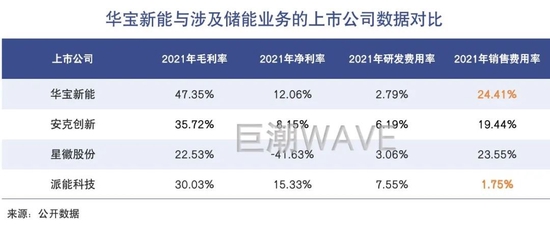
The two companies have very different business models. Under the retail model of Huabao New Energy, the sales price is the retail price for end consumers. It needs to promote products and attract C-end consumers, so it presents “high gross profit margin and high sales expense rate”. Under the to B major customer model of Paine Technology, the gross profit rate is not high but the net profit rate is considerable, and the sales expense rate is extremely low.
Judging from the financial report data, although the gross profit margin of Paineng Technology is much lower than that of Huabao Xinneng, its net profit margin is higher than that of Huabao Xinneng. The characteristics of Huabao Xinneng’s “high gross profit margin and high sales expense ratio” are more similar to cross-border e-commerce players Anke Innovation and Xinghui, which are involved in the portable energy storage business. They all require a lot of marketing promotion and branding. put.
However, in the listing announcement, Huabao New Energy chose Pine Energy Technology and Anker Innovation as comparable listed companies. Based on this, it is concluded that Huabao Xinneng’s 84.6 times issuance price-earnings ratio is lower than the static price-earnings ratio of comparable listed companies.
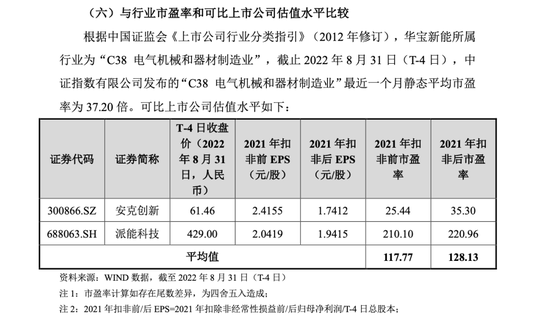
The actual situation is that the price-earnings ratios of Anker Innovation’s net profit before and after the deduction in 2021 are 25.44 times and 35.3 times, respectively, while the price-earnings ratios of the net profit before and after the deduction of non-deductibles in 2021 are as high as more than 200 times. The average price-to-earnings ratio of comparable companies of Huabao New Energy is mainly inflated by Paineng Technology.
Some investors questioned the rationality of this pricing method-although they belong to the large energy storage industry, portable energy storage and household energy storage are not the same product, and there are also significant differences in business models. Is it reasonable to refer to the high valuation of household energy storage?
Markets vary widely
There are significant differences between portable energy storage and home energy storage.
In almost all business models, the industry track is the first step, and it is the basis for all subsequent realizations. What track the enterprise is in usually determines the ceiling height of the enterprise. From the perspective of downstream markets, there are significant differences in market size between portable energy storage and home energy storage.
As mentioned above, portable energy storage is mainly used in outdoor activities and emergency scenarios. Therefore, its main consumer markets are located in the United States, Japan and Europe. The consumer groups are scattered and small, especially the United States, which has a high penetration rate of outdoor activities, accounting for nearly half of the market share. .
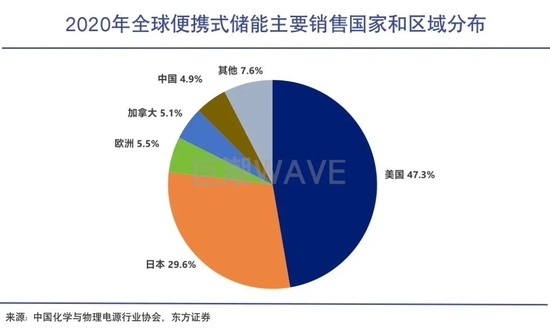
The development of household energy storage is mainly due to the support of government subsidies and the economic improvement (peak-valley arbitrage) brought about by high electricity prices, especially in the European market. This year’s residential energy storage market has achieved an explosion beyond expectations.
Due to more rigid demand and wider application, the market size of household energy storage will also be larger. Founder Securities estimates that based on the average annual cost reduction of 5% of the energy storage system, the global household energy storage industry is expected to be about 111.7 billion yuan in 2025.
The development of the portable energy storage market always has to face the problem of niche demand. Its future market space mainly comes from the needs of outdoor sports and lightweight emergency disaster preparedness.
At present, there is a lot of controversy in the market for the development of portable energy storage. An optimistic view, such as the China Chemical and Physical Power Industry Association, predicts that by 2026, the global shipment of portable energy storage will exceed 30 million units, and the market size will exceed 80 billion yuan.
However, some institutions believe that portable energy storage will always be a “niche market” with limited size, and the demand for portable energy storage in countries that are not keen on outdoor sports will always be very limited.
Although the development of the outdoor market in many countries is still in its infancy, for example, the proportion of the population participating in outdoor activities in my country is only 9.5%, which is far lower than about 50% in the United States. It seems that there is a lot of room for improvement, but the lifestyle of domestic residents But it may not be able to evolve like the European and American markets.
In addition, the rapid outbreak of portable energy storage in the past two years is largely due to the increase in demand for outdoor activities under the epidemic – self-driving tours, camping, picnics, photography, etc. It is doubtful that demand will last as the pandemic fades. The growth of Huabao New Energy has also experienced a significant deceleration. In the first half of this year, its revenue increased by 35.77% year-on-year, and its net profit increased by 2.2% year-on-year; the growth rate has slowed down significantly compared to the doubling of the past two years.
Huabao Xinneng, which started as a power bank, also has plans to enter the home energy storage track. The prospectus shows that it has established a home energy storage research department, and in the future, it will actively introduce home energy storage technical talents who master the industry’s forward-looking technologies, and continuously strengthen the construction of the home energy storage team.
However, household energy storage has a larger charge capacity and has higher requirements for safety. Its household energy storage system has certain technical thresholds on components such as cells, PCS, and power modules. If you want to cut into this track, both in terms of technology and channel construction, it is not difficult.
Difficulty breaking out of the Red Sea
The threshold of the portable energy storage track is lower, and there are more players participating.
Different market segments and segmented tracks also mean different industry patterns and competitive strengths.
From the perspective of the industry structure, the technical threshold of the household energy storage track is higher, and the competition situation is relatively moderate; household energy storage products are mainly sold overseas, and overseas channel certification is complicated and the cycle is long, energy storage manufacturers often cooperate with downstream integrators, Installers build a good channel relationship, and it is not easy to form vicious competition.
In contrast, the threshold for the portable energy storage track is lower, more players are involved, and the industry competition is gradually moving towards the “Red Sea”.
The composition of portable energy storage products is relatively simple, and there are no high technical barriers. For example, Huabao Xinneng’s cells, inverters, structural parts, solar panels, etc. all rely on external procurement. Its R&D expense rate in 2021 is only 2.8%, which is less than half of that of Paineng Technology. Paineng Technology not only produces special batteries for energy storage, but also has independent research and development and manufacturing capabilities for core components of energy storage such as batteries, modules, battery management systems, and energy management systems.
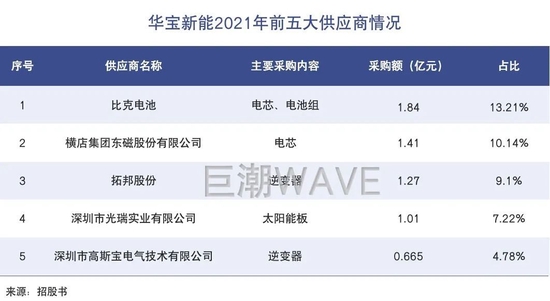
The maturity of the foundry industry chain also makes it easier for new players to quickly enter the portable energy storage track. For example, GoalZero, which has the third largest market share in the world, its portable energy storage products are produced by A-share listed companies Highpower Technology and Boliwei. For example, player Delan Minghai used to be an OEM for Anker Innovations, and he was also one of the suppliers of energy storage products of Global E-Commerce and Aoji Technology.
Juchao summarized and found that at present, the technology giant Huawei, the first brother of the socket, and the first brother of Anke Innovation have all launched related products; among the A-share listed companies, Lifan Technology, Mingpu Opto-Magnetic, Fenda Technology, Zhongneng Electric, Superstar Technology, etc. have been officially announced. Xiaomi also recently officially released its first portable energy storage product, the Mijia Outdoor Power Supply 1000Pro. Gaogong lithium battery data shows that in 2020, more than 90% of the world’s portable energy storage will be produced in China.
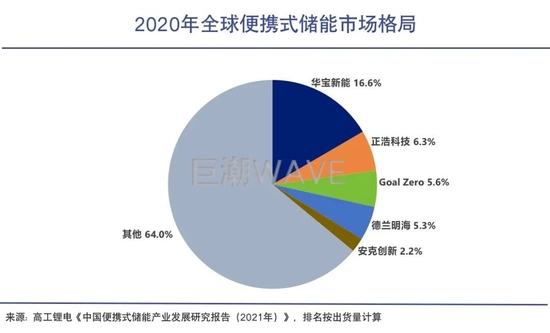
This is never good news for existing players. The leading players on the portable energy storage track have generally been established for only a few years. They have a certain first-mover advantage, but it is difficult to talk about how high the brand barriers and market barriers are. If competition intensifies, Huabao New Energy’s future growth will inevitably be impacted by competition.
Especially in the face of giant players, the current market size of the portable energy storage track of nearly 10 billion is not enough for the giants to mobilize too many resources. Once the market expands rapidly, giants begin to bet heavily on this track, and the existing market pattern may be rewritten.
write at the end
Since 2015, it has been transforming into portable energy storage. Huabao Xinneng has become the world’s largest portable energy storage player in just 5 years. Undoubtedly, it is very lucky that it can be set at a high price by institutions, which also benefits from the competition. Road’s high prosperity.
But in the final analysis, portable energy storage and household energy storage are not the same “species”, and there are significant differences in product categories, application scenarios, business models and potential market space between the two.
How big is the industry space for China’s outdoor activities, there is still a question mark, not to mention that the competition on the track is constantly intensifying. This means that the rationality of Huabao Xinneng’s 84.6 times issuance price-earnings ratio is open to question, and investors should also make prudent decisions about this.

This article is reproduced from: http://finance.sina.com.cn/tech/csj/2022-09-15/doc-imqmmtha7395531.shtml
This site is for inclusion only, and the copyright belongs to the original author.